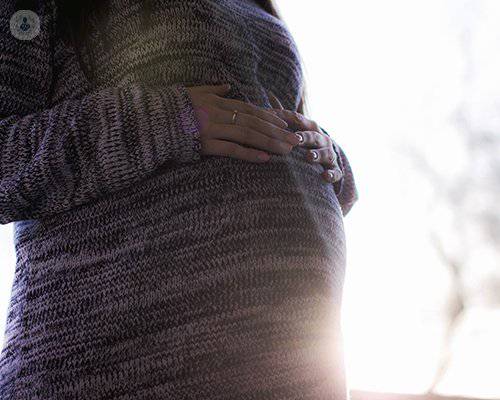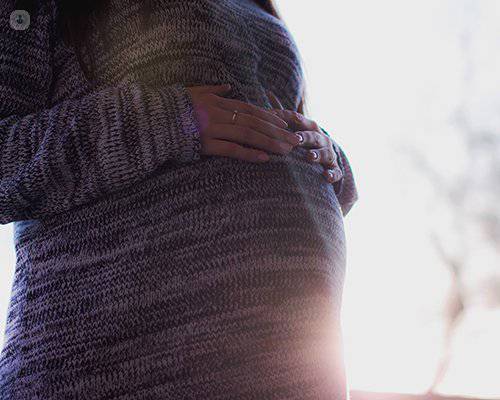
Amniocestesis: What are the real risks during pregnancy?
Amniocentesis (also referred to as amniotic fluid test or AFT) is an invasive prenatal diagnostic technique involving the extraction of a small quantity of amniotic liquid from the gestational sac, making it possible to carry out certain tests.

This is done through the mother's abdomen, without the need for anaesthetic, using a fine needle and an ultrasound monitor (so that the foetus is always visible and there is no risk of puncture). The surface of the mother's skin is disinfected in advance to prevent the introduction of germs. The amniotic sac is punctured, far from the foetus, and once located, the amniotic fluid is extracted using a syringe. The extracted liquid is replaced by the body within a few hours.
Rest and care during amniocentesis
The recommendations for pregnant women who undergo amniocentesis are:
- To rest at home for 24 hours (bed rest is not necessary, but it good to spend the most time possible resting e.g. It is fine to get up to eat, use the toilet and also walk up a flight of stairs)
- After this, 3-4 relatively restful days, which means resuming normal life with as much rest as possible and avoiding long walks, abdominal strain, sports and sexual relations. Avoiding immersion in water (bath or pool) is also recommended, although there is not much scientific basis for this recommendation. The only cause for alarm that would require you to return to the hospital would be bleeding or loss of vaginal liquid.
If the mother is Rh negative, with a Rh positive father, gamma globulin anti-D is administered to the mother to avoid a potential immunisation in the case that the foetus is Rh positive (which it is impossible to know).
Indications and situations
Some indications may be referred to as “classic”, when determining risk factors: previous children with chromosomal anomalies, either parent carrying a chromosomal anomaly, repeated abortions or precedence of unexplained foetal mortality, detection of any anatomical anomaly in the foetus that indicates it might be a carrier of chromosomopathy and advanced maternal age.
The greater the maternal age, the higher the risk of chromosomal anomalies, principally trisomies, like Down's syndrome, as there are other chromosomal anomalies that are not linked to age.
But it is currently important to point out an indication that has increased significantly: the parent's desire (often misnamed anxiety) for the foetus to be healthy.
The number of pregnant women who receive amniocentesis has increased in the last 20 years, fundamentally due to higher pregnancy ages. Currently, the percentage over 35 years old is more than 30% of the pregnant population.
But there are also other reasons: smaller numbers of children, first child at a later age (the average is currently over 32 years old), pregnancies occurring through reproductive techniques (at least 5 % of pregnancies).
It is also true that new non-invasive prenatal diagnostic methods, using maternal blood, have increased, especially those linked to Down's syndrome (trisomy 21), which may reduce the number of amniocenteses, although this may reduce the incidence of detection of other anomalies.
This percentage can vary greatly from centre to centre, depending on their protocol for offering prenatal diagnostics, and the risk profile of the pregnant patients. It is difficult to find absolute counter indications for amniocentesis, although there are situations where the risk must be weighed against the benefit, such as in the presence of uterine fibroids, or where the mother is carrying an illness that could be passed to the foetus.
The risks of amniocentesis
Typically, it is said that tests result in abortion in around 1% of cases, but this is not true of centres with high-resolution sonograms and highly qualified staff.
In more experienced centres amniocentesis results in abortion in between 0.1 and 0.3 % of cases.

